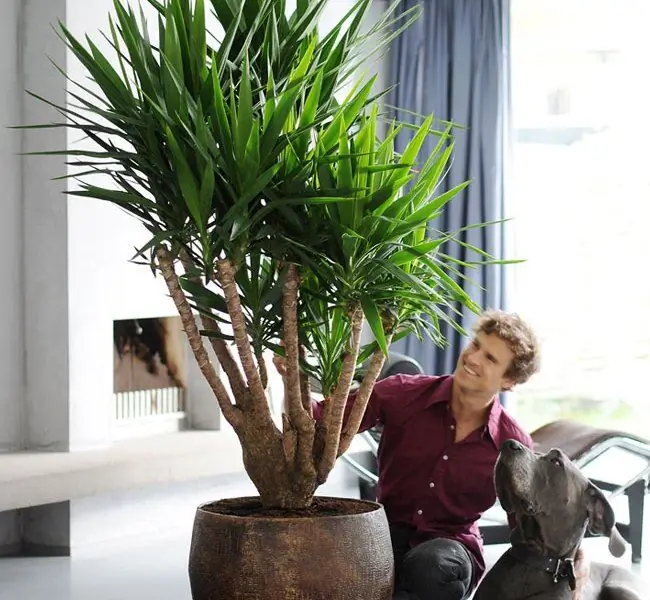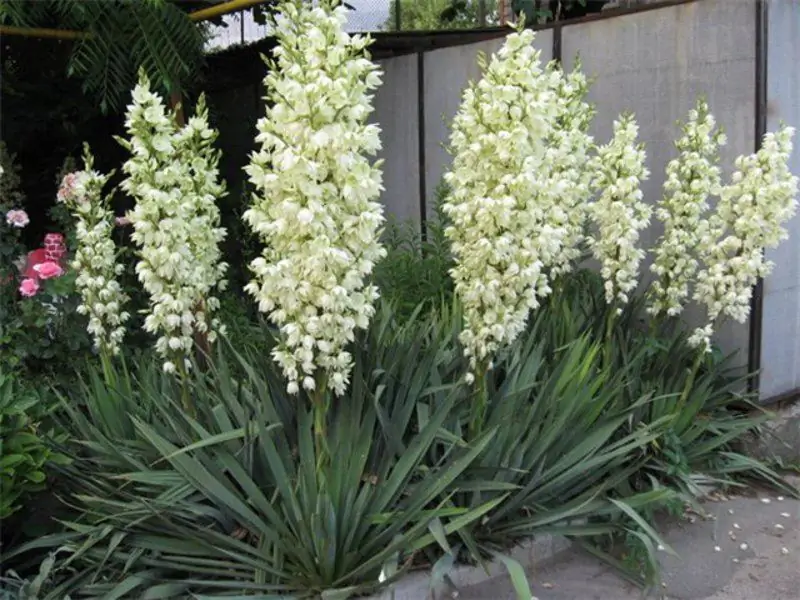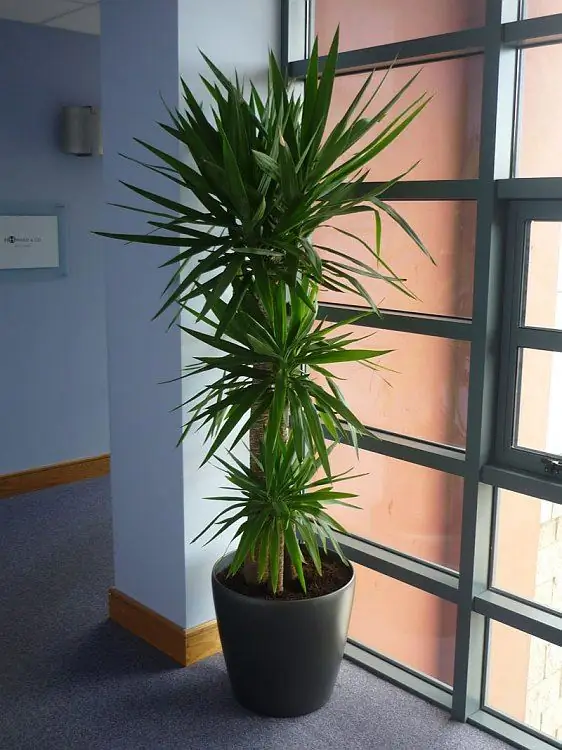One of the finest evergreens is yucca. She very often decorates personal plots, but also fits perfectly into the home interior.

There are many types of yucca (Joshua, Shidigera, short-leaved, filamentous, etc.), but only elephant and aloe leaf are grown in the home.
Brief characteristics of indoor yucca species
Elephant yucca is a tree-like shrub, whose trunk becomes thick and strong as it “ages”, similar in appearance to an “elephant leg”. On the upper part of the plant there are straight, densely growing shoots covered with leathery, bright green glossy leaves, 10 cm wide and more than 1 m long. It blooms in the summer months in the form of large white bells located on long peduncles (h = 0, 9-1, 0 m).
Aloe yucca grows up to 2 m. It has green or variegated leaves, which give the plant a spherical shape with age.

Growing indoor yucca species and caring for them
Indoor yucca species grow well in the home and do not require any specific care. The main thing is to follow all the rules for growing these flowers.
Location and lighting - yucca is a light-loving plant that needs bright sunlight for at least 10-12 hours a day. It is not afraid of direct sunlight, and the shadow, on the contrary, has a bad effect on the appearance of the leaves, therefore it is best to place the plant on the windowsills located in the south, east and west of the room. In winter, the flower requires additional lighting, and in summer, outdoor placement.
Temperature regime - the ideal temperature is 20-25 ° C, with a higher temperature, regular ventilation is necessary, but cold gusts of wind and drafts should be avoided. In the winter months, yucca must be transferred to a room where t = 10-20 ° C.
Watering - plentiful, is done after the upper part of the substrate dries up to 5 mm with settled water t = 18-22 ° С. In winter, plants are rarely watered and little liquid is used.
Air humidity - spraying is necessary during the winter months, as the air can dry out due to the operation of the heating system.
Soil selection - a soil composition is used, prepared from 3 parts of sod land and 2 parts of river sand and leafy soil.

Choosing a pot - the planting container should be high and voluminous. To prevent the flowers from tipping to the bottom, it is necessary to lay out coarse pebbles in layers, then granite (crushed into small pieces), and at the end drainage.
Top dressing and fertilizers - any complex top dressing is applied only in the summer months by applying to the ground 1 time in 14 days.
Pruning - done on an elephant yucca, so that it does not grow to its maximum size, the upper part is trimmed.
Transplant - in young plants every 2 years in larger pots by transferring, in old ones, the top layers of the soil are replaced with a new one.
Reproduction - seed and vegetative (cuttings and parts of the trunk) methods are used.
Pest and disease control - spider mites and false scabbards are dealt with with the help of chemicals (for example, Actellic), and root rot and leaf spot are dealt with by renewing plants.
This is all the necessary information about the peculiarities of caring for indoor yucca species, and these plants will soon become indispensable "highlights" of your home decor.






